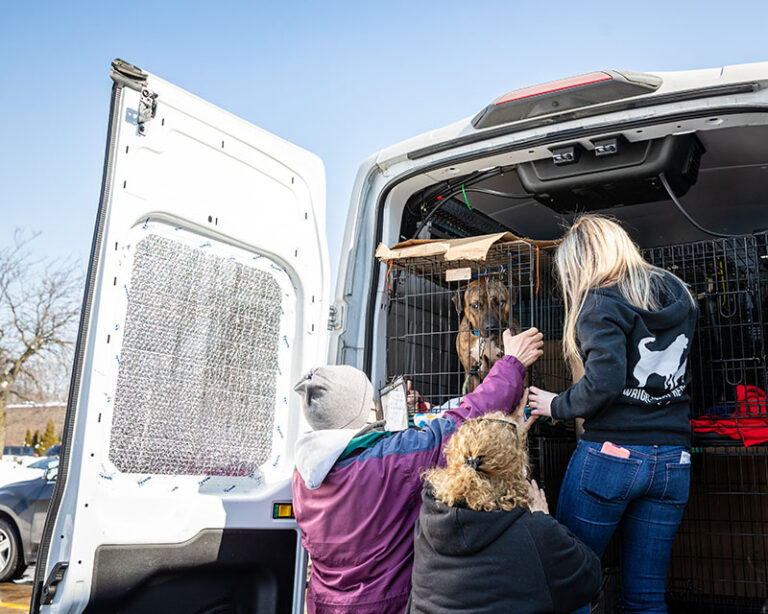The last several years have been challenging for all of us in animal welfare, but disruption can be a catalyst for change. We have seen animal welfare professionals and volunteers rally to support their animals, their communities, and the families in greatest need.
One of the most exciting things we witnessed was the creativity of animal welfare organizations to change and adapt their physical shelters into the community-focused shelters of the future, rethinking and reworking the role of the facility.
These scrappy, shelter-changing pioneers are showing us how the role of the shelter facility can be transformed, often using very few dollars. We’re sharing 10 of our favorite effective and cost-effective ideas to help you on that path!
1. Leverage dog foster and managed intake programs to free up dog housing spaces.
Once there are fewer dogs in care, a whole new world of possibilities appears! Some of the empty housing spaces can be modified with side-to-side transfer doors to create double runs. These are great for co-housing dogs or for individual dogs who need more space.
2. Use some of the extra dog housing space you just generated to house special needs cats!
Dog runs make great housing spaces for feline hoarding cases, for example. They also make good isolation spaces for cats.
3. Leverage cat foster and TNR programs to reduce the population of cats and to care for them outside of the shelter walls.
Just as with dog spaces, once we free up some square footage in the shelter, we can do so much more.
4. Use the cat space you just created to improve the quality of your cat housing.
If you don’t already have portals installed in cat housing, this is the first and easiest fix.
5. Construct outdoor enclosures like a simple barn, oversized shed building, or buildings for barn or community cat programs.
ats who live outside prefer to remain outside, so create simple and safe outside housing enclosures for them.
6. Purchase a storage building to start a pet pantry.
Many organizations have been temporarily stashing pet pantry items in their classrooms and event space, as social gatherings have not always been possible during COVID.
Moving forward, create a new, dedicated space for a pet pantry. It does not need to be fancy—a prefabricated metal storage shed will work fine for this purpose. It can be helpful to keep some emergency supplies for humans that you can distribute, in this same storage building.
7. Keep some curbside services going.
During the pandemic, we’ve had to do many things outside, which in turn means that some of the public areas of our buildings are less crowded. How about keeping some aspects of curbside service? Examples of curbside-ready programs include foster supply pick up, drop off for community spay/neuter programs, food bank distribution, etc. We predict that the shelters of the future will have covered drop-offs, parking areas, and drive-through services.
8. With the space you just freed up in your lobbies, create some better counseling areas.
Functional counseling areas are critical for the shelters of the future. Counseling spaces can be erected inexpensively with partial-glass partitions.
9. Look at moving some spaces around to give your clinic more room.
The shelter veterinary clinic will play a bigger and bigger role, if it isn’t already, so reconfigure your rooms to provide more space around the clinical areas of your floor plan.
10. Capture some remote work concepts.
Given what we have learned about communicating digitally, some of your staff can be staged elsewhere in the future, which allows us to think of ideas for decentralizing the animal shelter and creating more networks throughout the community.
What if the shelter of the future is several small neighborhood support centers, with one central hub? Start small on your own hub and spoke; your first step may be to develop a remote call center to serve the community, and the next step may be to stage a program such as a kitten nursery in an offsite location. Over time, you might discover that you can find the least expensive solutions to solve each problem, simply by freeing yourself from the concept of “all under one roof.”
What change can you make tomorrow to the role of the facility in your own shelter to better care for your community? If it’s easy, give it a try! You won’t look back.






